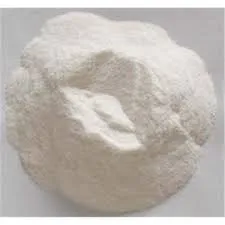
Nov . 13, 2024 08:35 Back to list
hydroxypropyl methyl cellulose msds
Safety and Handling of Hydroxypropyl Methyl Cellulose (HPMC)
Hydroxypropyl Methyl Cellulose (HPMC) is a versatile cellulose-derived compound widely used in various industries, including pharmaceuticals, food, construction, and cosmetics. As an essential ingredient, it functions primarily as a thickener, stabilizer, and emulsifier, imparting desirable properties such as improved texture and enhanced efficiency of formulations. While HPMC is generally considered safe for use, it is important to understand the material safety data sheet (MSDS) associated with this compound to ensure proper handling and risk management.
Physical and Chemical Properties
HPMC appears as a white to off-white powder with no distinct odor. It is soluble in cold water, forming a viscous solution, but insoluble in organic solvents. The chemical structure consists of hydroxypropyl and methoxy substituents on the cellulose backbone, providing the compound with unique thickening and binding properties. HPMC is stable under normal conditions but should be stored in a cool, dry place away from direct sunlight to maintain its integrity and effectiveness.
Health Hazards
According to the MSDS for HPMC, it is classified as non-toxic and non-carcinogenic. However, exposure to the powder can cause mild irritation to the eyes, skin, and respiratory tract. When handling HPMC, it is advisable to wear appropriate personal protective equipment (PPE), including gloves, goggles, and a dust mask, to minimize the risk of irritation or allergic reactions. Ingestion or inhalation of large quantities may result in gastrointestinal discomfort or respiratory issues, so handling should be conducted in well-ventilated areas.
First Aid Measures
hydroxypropyl methyl cellulose msds

In case of accidental exposure, immediate action is crucial. If HPMC powder comes into contact with the eyes, flush them with plenty of water for at least 15 minutes and seek medical attention if irritation persists. For skin exposure, wash the affected area thoroughly with soap and water. If ingested and symptoms such as nausea or vomiting occur, it is essential to consult a healthcare professional. For inhalation, moving the affected individual to fresh air is recommended, and medical assistance should be sought if respiratory symptoms develop.
Storage and Disposal
Proper storage of HPMC is essential to maintain its quality and prevent degradation. The product should be stored in sealed containers to protect it from moisture and contaminants. The ideal storage temperature is between 15°C and 30°C (59°F to 86°F). As for disposal, HPMC is biodegradable; however, it should be disposed of in accordance with local regulatory requirements and guidelines to minimize environmental impact.
Environmental Impact
HPMC's environmental profile is favorable, as it is derived from natural cellulose sources and is biodegradable. Its use in various applications, especially in the food and pharmaceutical industries, highlights its importance as a safe and effective ingredient. However, it is still essential to adhere to best practices for environmental stewardship by minimizing waste and adopting sustainable practices wherever possible.
Conclusion
Hydroxypropyl Methyl Cellulose (HPMC) is a valuable compound widely used across numerous sectors due to its unique properties. Understanding its MSDS is crucial for ensuring safe handling, storage, and disposal. While HPMC has a low toxicity profile, precautionary measures are necessary to prevent accidental exposure. By following safety protocols and best practices, users can effectively harness the benefits of HPMC while ensuring health and environmental safety. As industries continue to evolve and innovate, HPMC’s role as a functional ingredient will undoubtedly remain significant.
-
Versatile Hpmc Uses in Different Industries
NewsJun.19,2025
-
Redispersible Powder's Role in Enhancing Durability of Construction Products
NewsJun.19,2025
-
Hydroxyethyl Cellulose Applications Driving Green Industrial Processes
NewsJun.19,2025
-
Exploring Different Redispersible Polymer Powder
NewsJun.19,2025
-
Choosing the Right Mortar Bonding Agent
NewsJun.19,2025
-
Applications and Significance of China Hpmc in Modern Industries
NewsJun.19,2025







